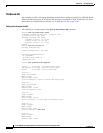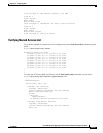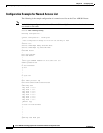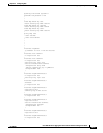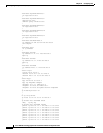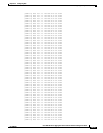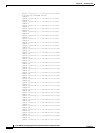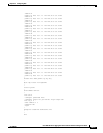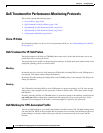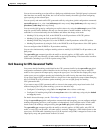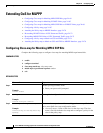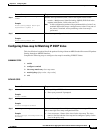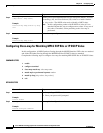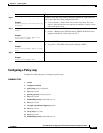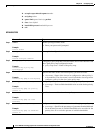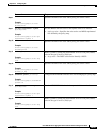
24-62
Cisco ASR 901 Series Aggregation Services Router Software Configuration Guide
OL-23826-09
Chapter 24 Configuring QoS
QoS Treatment for Performance-Monitoring Protocols
QoS Treatment for Performance-Monitoring Protocols
This section contains the following topics:
• Cisco IP-SLAs, page 24-62
• QoS Treatment for IP-SLA Probes, page 24-62
• QoS Marking for CPU-Generated Traffic, page 24-62
• QoS Queuing for CPU-Generated Traffic, page 24-63
• Configuration Guidelines, page 24-80
Cisco IP-SLAs
For information about Cisco IP service level agreements (IP-SLAs), see Understanding Cisco IOS IP
SLAs, page 3-2.
QoS Treatment for IP-SLA Probes
The QoS treatment for IP-SLA and TWAMP probes must exactly reflect the effects that occur to the
normal data traffic crossing the device.
The generating device should not change the probe markings. It should queue these probes based on the
configured queueing policies for normal traffic.
Marking
By default, the class of service (CoS) marking of CFM traffic (including IP SLAs using CFM probes) is
not changed. This feature cannot change this behavior.
By default, IP traffic marking (including IP SLA and TWAMP probes) is not changed. This feature can
change this behavior.
Queuing
The CFM traffic (including IP SLAs using CFM probes) is queued according to its CoS value and the
output policy map configured on the egress port, similar to normal traffic. This feature cannot change
this behavior.
IP traffic (including IP SLA and TWAMP probes) is queued according to the markings specified in the
cpu traffic qos global configuration command and the output policy map on the egress port. If this
command is not configured, all IP traffic is statically mapped to a queue on the egress port.
QoS Marking for CPU-Generated Traffic
You can use QoS marking to set or modify the attributes of traffic from the CPU. The QoS marking action
can cause the CoS, DSCP, or IP precedence bits in the packet to be rewritten or left unchanged. QoS uses
packet markings to identify certain traffic types and how to treat them on the local router and the
network.



